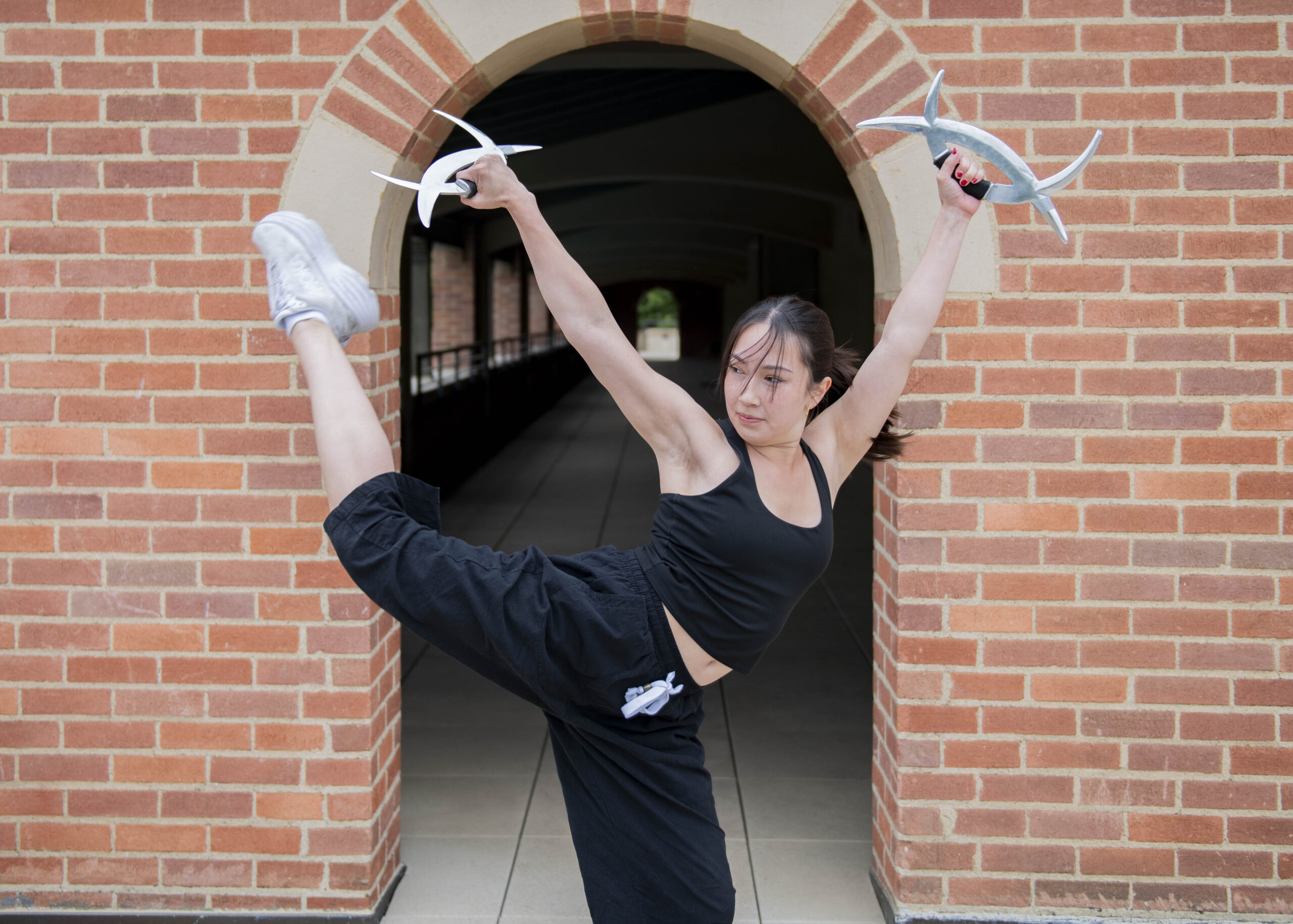With every step, Elena Bruce strikes a balance between movement and intention.
Growing up in a competitive dance environment, the fourth-year dance student is evolving her artistic identity as a dancer, deriving meaning through movement. Incorporating elements of martial arts into her contemporary choreography, Bruce said the fusion of both disciplines has deepened the strength and intention behind her work. Bruce said UCLA’s dance department has helped her discover her choreographic voice, incorporating aspects of her cultural identity into her movement.
“I think it’s (the dance department) been able to push me to do better each time, create something completely different because I want to show the range of dynamics I could do,” Bruce said. “Having different performance opportunities made me try to stretch and do as many types of pieces that I could create.”
Focusing predominantly on contemporary dance prior to UCLA, Bruce said her competitive experience was rooted primarily in technique and precision, deemphasizing the intention behind the movement. Choreographing for productions within the dance department including WACsmash, UCLA’s annual World Arts and Cultures/Dance showcase, encouraged her to take more experimental risks, she said, adding additional meaning and depth to her process. Bruce said she strives to incorporate different movement styles and influences into each piece of choreography, demonstrating her dynamic range through performance.
[Related: Spring Sing 2025: ACA All Day embraces diverse styles of dance, cultivates close community]
Bruce’s first WACsmash piece blended elements of traditional kung fu and other martial arts styles to recreate fight scenes in a film-inspired performance, she said. First training in martial arts as a child alongside her brother, Bruce said the overlap between martial arts and dance has given her greater physical control, allowing her to build upon both art forms. Associate Professor of Choreography Miguel Gutierrez said Bruce’s fusion of movement styles blends together seamlessly, allowing her to embody narrative storytelling through her choreography.
“There’s just always been this sense of interest and ability to truly express yourself in movement,” Gutierrez said. “Some people speak in movement and that’s kind of their home. I feel like that’s been there since the beginning … she knew early on that that was what she was.”

In her senior capstone piece, Bruce said she wanted to incorporate her cultural identity into her choreography, as many of her previous works were curated for an audience’s perspective, rather than for herself. Drawing inspiration from her multiracial background, Bruce said she was influenced by the concept of yin and yang, incorporating childhood memories regarding her identity into her piece. Dancing alongside her longtime friend Erin Co, Bruce said she explored the tension between balance and opposition, creating a much more intimate performance than her prior compositions.
Third-year biology and dance and student Co said the two danced together competitively all through high school, allowing her to observe Bruce’s creative evolution with martial arts-infused movement. Co added that Bruce is highly specific and articulate regarding her creative vision, ensuring all dancers in her piece embody the movement’s message through personal feedback. Resembling the push and pull between Bruce’s two identities, her senior capstone duet is mirrored by the binary relationship between the two dancers, Co added.
“Taking this time to work with her was very grounding, in a sense,”Co said. “It was just reminiscent of also our growth together … I also think that it was time for me to appreciate her for who she is and her art and her work.”
[Related: Dance groups struggle to find rehearsal spaces amid John Wooden Center renovations]
Gutierrez said one of Bruce’s strengths is her intentionality behind her movement, taking in feedback from her professors within the department, but also trusting her own instincts. Leaning into her martial arts training, Bruce used combat-infused movement in a solo choreographed for Gutierrez’s class, exploring gender roles surrounding physical combat and telling powerful stories about the fear that exists around gun violence on school campuses, he said. With her extensive technical background and capacity for storytelling, Gutierrez said Bruce is well-positioned to pursue multiple career paths after graduation.
“Elena is a perfect example of someone who came in with a vision and came in with a personal point of view but who has taken in the ethics and principles of our department and our program, which are to think about what dance does in the world and what it can do and what it represents and how it empowers people,” Gutierrez said.

Continuing to verse herself in numerous styles including modern dance and floorwork, Bruce said UCLA’s dance department has contributed heavily to the way she views movement. Inspired by her own modern teacher Gracie Whyte, Bruce said she teaches a variety of dance styles to young dancers, influenced by the teaching methods of her UCLA mentors. As she continues to explore and experiment with the fusion of movement styles into her career aspirations, Bruce said she encourages aspiring dancers to carve out their own opportunities and connect with the community that forms as a result.
“When you get judged for probably anything, there’s a lot of straight lines you have to follow to do well,” Bruce said. “I came to college and it wasn’t competitive in that way and you can be encouraged and appreciated for going in your own lane. I think that’s how it changed the way I saw dance.”
